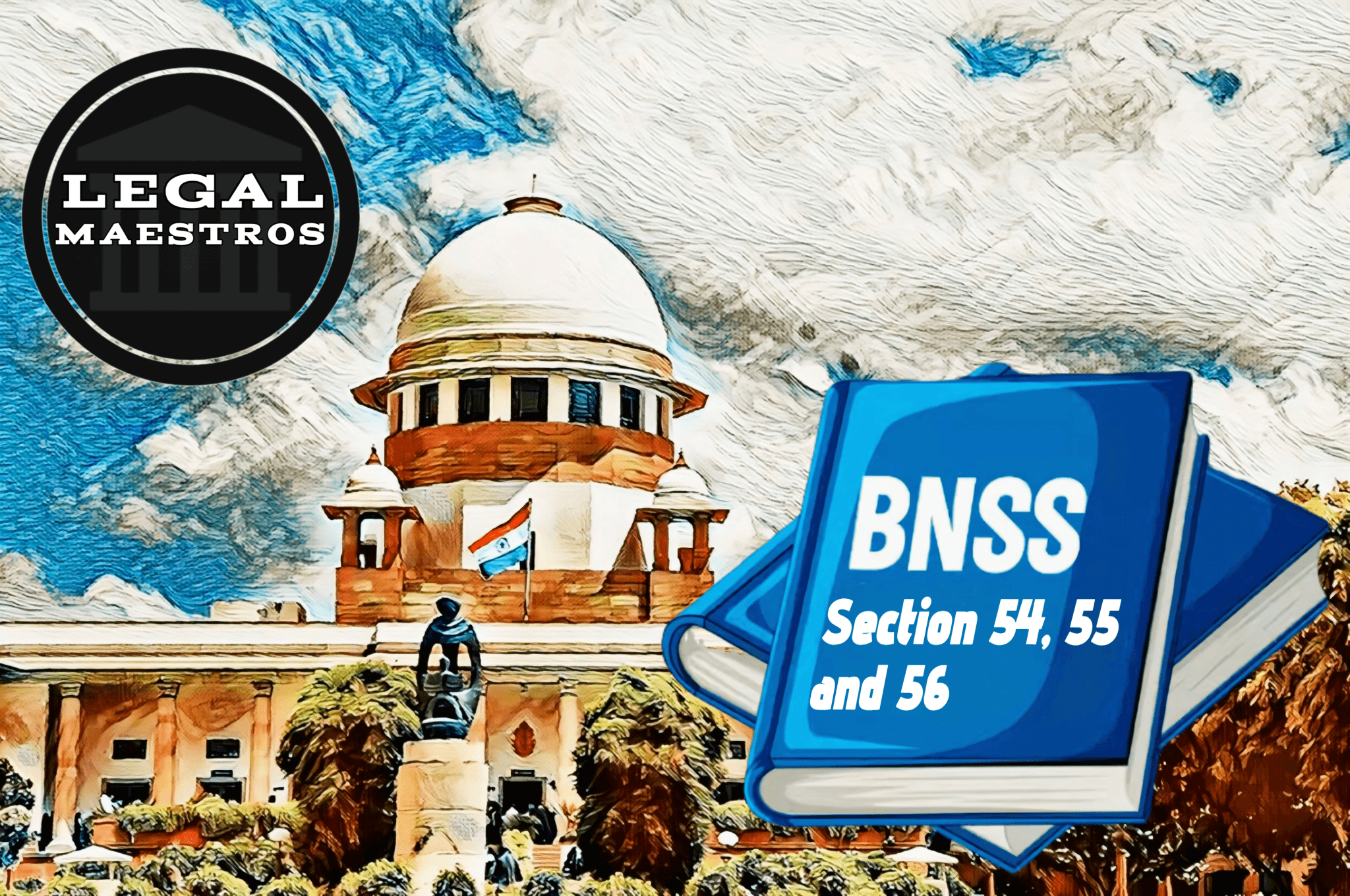
Section 54 – Identification of the Person Arrested
When an individual is detained on suspicion or accusation of committing a crime, it may become necessary for another individual, such as a victim or a witness, to identify the individual who has been detained. Legal support for this procedure can be found in Section 54 of the Bharatiya Nagarik Suraksha Sanhita, which applies to the year 2023. Consequently, it enables the court that has jurisdiction over the situation to issue an order requiring the individual who was arrested to take part in an identifying process. On the other hand, this order must be given in response to a request that was submitted by the officer who is in charge of a police station.
It is essential that this section be included because it guarantees that law enforcement will be able to verify whether or not the individual who has been arrested is, in fact, the person who committed the offense. A further layer of monitoring is added by the presence of the court, which helps to prevent the identification process from being abused.
A method that the court deems appropriate must be utilized in order to carry out the identifying process. As a result, this provides for flexibility and guarantees that the procedure is fair and does not have any adverse effects on the individual who has been arrested. The role of the court is supervisory, and it is responsible for ensuring that identification is carried out in a lawful and fair manner.
For any queries or to publish an article or post or advertisement on our platform, do call at +91 6377460764 or email us at contact@legalmaestros.com.
Section 54 contains a clause that is particularly important with regard to individuals who are either mentally or physically impaired. There is a legal need that the identification process must be carried out under the supervision of a Judicial Magistrate in the event that the individual who is going to carry out the identification has any kind of handicap. Taking this measure guarantees that the procedure is considerate of the requirements of the impaired person. In addition to that, the process of identification needs to be captured using audio-video electronic means. This recording serves as evidence that the identification process was carried out in an appropriate manner and with the utmost care.
The illustration for the 54th Section
Let’s say that a person is taken into custody in conjunction with a robbery charge. An individual who witnessed the crime asserts that they had a clear view of the thief. The officer conducting the investigation is of the opinion that the witness is able to identify the suspect. The court receives a request from him to carry out an identification parade of the defendant. After the court has granted permission, the accused person is invited to stand beside other individuals who appear to be of similar appearance. The accused person is then identified by the witness. A Judicial Magistrate would monitor the procedure to ensure that the identification is carried out using means that are comfortable for the witness, such as touch or specifically adapted techniques, and that the entire process is recorded for transparency. This would be the case in the event that the witness was blind or had some other form of mental disability when the identification was being carried out.
Section 55 – Procedure When a Police Officer Deputes a Subordinate to Arrest Without a Warrant
When a police official gives an order to a subordinate to arrest a person without a warrant, the procedure that must be followed is outlined in Section 55 of the Bharatiya Nagarik Suraksha Sanhita, which was published in 2023. This is relevant in circumstances in which the arrest is not carried out in the presence of the senior officer but rather is assigned to a junior officer within the department.
For any queries or to publish an article or post or advertisement on our platform, do call at +91 6377460764 or email us at contact@legalmaestros.com.
When a senior police officer or an officer in command of a police station needs to arrest someone without a warrant, and he wants a subordinate to carry out the arrest on his behalf, he is required to give a written order, as stated in the first paragraph of the section. Within this written directive, the name or identify of the individual who is going to be arrested, as well as the precise offense or reason for which the arrest is being made, must be mentioned in a clear and concise manner.
Upon obtaining this order, the subordinate officer is obligated to provide the individual who is being arrested with information regarding the reason for the arrest. Should the individual who was arrested make a request to view the written order, the law enforcement officer is obligated to provide it to them.
All arrests that are undertaken without a warrant are subject to this regulation, which guarantees transparency and accountability. By mandating the preparation of written documents and the communication of the reasons for the arrest, it safeguards individuals against arbitrary or wrongful detention.
For any queries or to publish an article or post or advertisement on our platform, do call at +91 6377460764 or email us at contact@legalmaestros.com.
Subsection (2) makes it abundantly apparent that this method does not restrict the authority of any police officer to make an arrest in accordance with Section 35, which is concerned with the authority to make general arrests.
The illustration for the 55th section
Assume for a moment that the Station House Officer (SHO) is in possession of substantial evidence suggesting that an individual has committed a severe theft. In order to prevent the SHO from leaving the station, he gives orders to a junior officer to make an arrest of the suspect. Specifically, he gives the subordinate a written order that specifies the identity of the suspect as well as the theft offense that the individual is to be arrested for. After that, the subordinate officer locates the suspect, warns them that they are going to be arrested for theft, and, if they ask for it, shows them the written order. The legal rights of the suspect are protected by this procedure, and it guarantees that proper procedure is followed.
Section 56 – Health and Safety of the Arrested Person
In the Bharatiya Nagarik Suraksha Sanhita, 2023, Section 56 places an emphasis on the duty of care that the authorities are obligated to exercise toward an individual who has been brought under custody. Therefore, the person who has custody of the accused is required to take reasonable precautions to ensure the accused person’s health and safety, as stipulated by this provision.
For any queries or to publish an article or post or advertisement on our platform, do call at +91 6377460764 or email us at contact@legalmaestros.com.
In order to defend the human rights of those who have been arrested, this clause is very necessary. The mere fact that a person is placed under arrest does not indicate that they are deprived of their fundamental rights, which include the right to be safe and to get appropriate medical treatment. During the time that the detained individual is being held in custody, the custodial officer is responsible for ensuring that they are not subjected to any threats, maltreatment, or unsafe conditions. Also, they are responsible for ensuring that the individual receives medical treatment if it is required.
The phrase “reasonable care” means that the efforts must be suitable, fair, and in conformity with the circumstances. Other words, they must be reasonable. For example, if the person who was arrested is injured or ill, it is the responsibility of the authority in charge of the custody to make arrangements for medical treatment as soon as possible.
It is possible that the competent authorities will face disciplinary or legal consequences if they fail to comply with the request. This part serves as a precaution against the occurrence of custodial torture, carelessness, or deaths, all of which have been a source of worry in a number of different administrations of criminal justice.
For any queries or to publish an article or post or advertisement on our platform, do call at +91 6377460764 or email us at contact@legalmaestros.com.
The illustration for the 56th section
Let us assume that a person is taken into custody late at night following a physical altercation that they were involved in. Upon being taken into custody, the subject reports experiencing acute chest pain. The officer who is in charge of his custody makes certain that the individual is transported to a local hospital as soon as possible, where he is provided with the appropriate medical care. Therefore, this conduct is in accordance with Section 56 since the officer took reasonable precautions to ensure the health of the individual. On the other hand, if the officer completely disregarded the complaint and the individual suffered a heart attack while they were in custody, this would be a violation of Section 56.

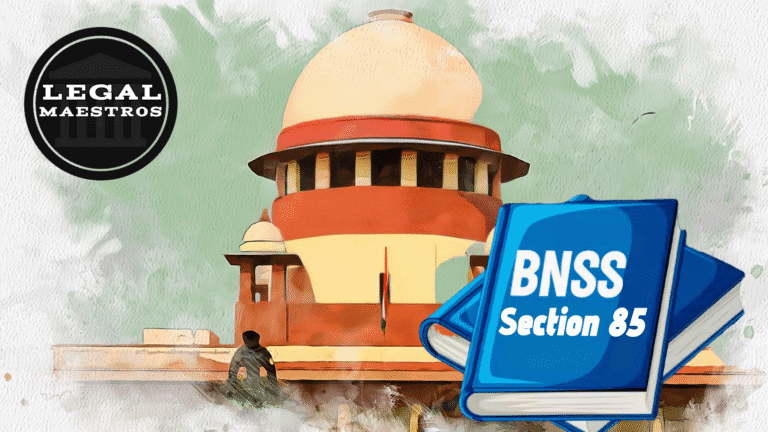
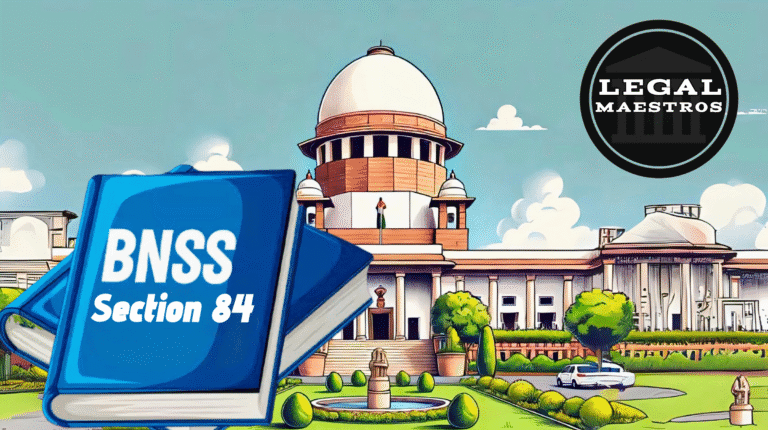
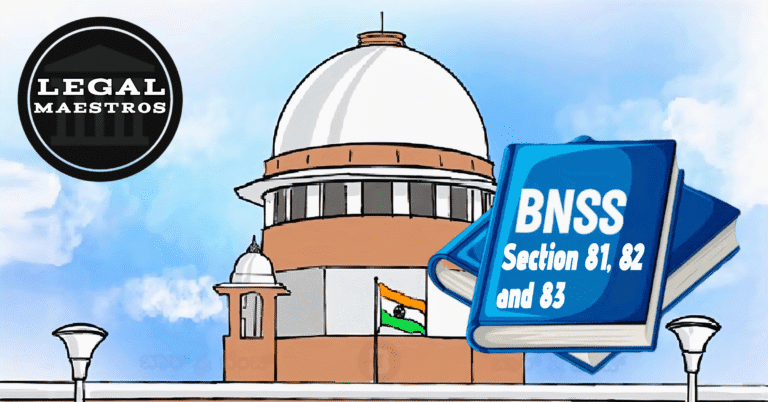
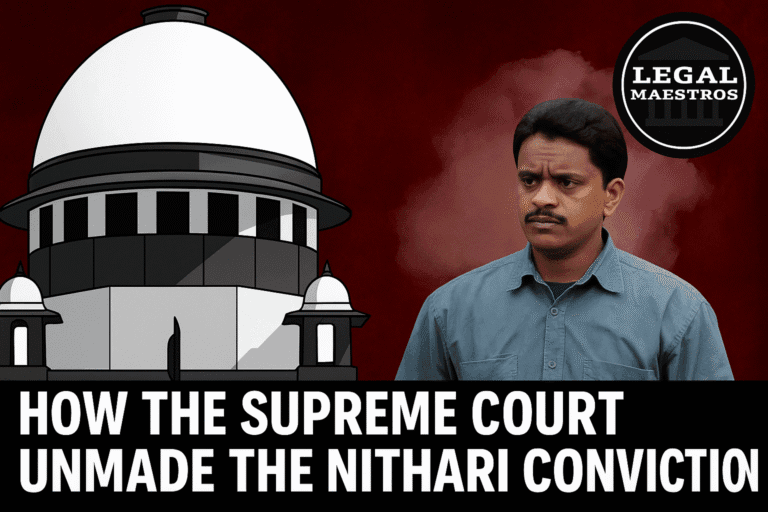

![Research Assistantship @ Sahibnoor Singh Sindhu, [Remote; Stipend of Rs. 7.5k; Dec 2025 & Jan 2026]: Apply by Nov 14, 2025!](https://legalmaestros.com/wp-content/uploads/2025/11/Gemini_Generated_Image_s0k4u6s0k4u6s0k4-768x707.png)
![Karanjawala & Co Hiring Freshers for Legal Counsel [Immediate Joining; Full Time Position in Delhi]: Apply Now!](https://legalmaestros.com/wp-content/uploads/2025/11/Gemini_Generated_Image_52f8mg52f8mg52f8-768x711.png)